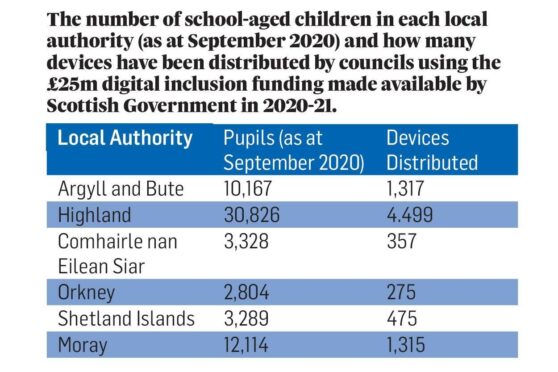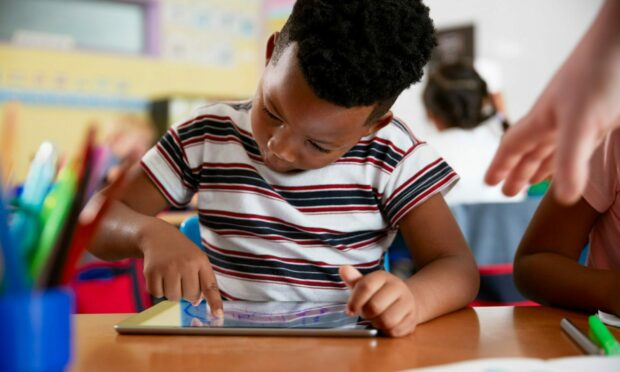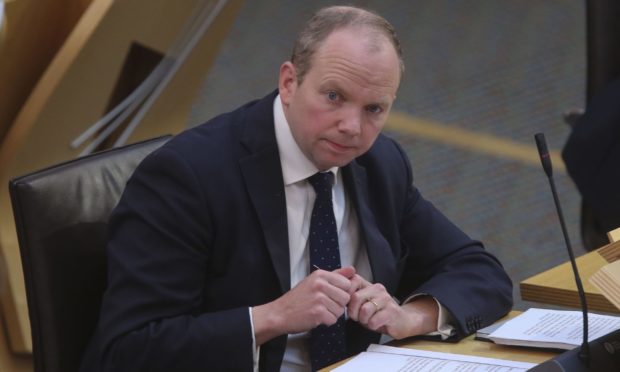New figures show just over one in 10 pupils in northern Scotland have been given a laptop or tablet using special funding provided by the SNP government.
Nicola Sturgeon’s party promised before last year’s Holyrood election to distribute the digital devices to all 700,000 youngsters in the nation’s schools.
But data for six council in the north suggest progress has been patchy to date, with many local authorities using their own stretched resources to pay for the equipment.
Donald Cameron, Scottish Conservative MSP for the Highlands and Islands, branded the figures “hugely disappointing”.
 Plans were made to spend £350 million on tablets and laptops after the pandemic exposed a “digital divide” when pupils were forced to work from home.
Plans were made to spend £350 million on tablets and laptops after the pandemic exposed a “digital divide” when pupils were forced to work from home.
Mr Cameron used parliamentary questions at Holyrood to quiz the Scottish Government on work to reach the target in the Highland, Moray, Argyll and Bute, Western Isles, Orkney and Shetland council areas.
Ministers were only able to say how many devices had been issued using the government’s £25m digital inclusion funding in 2020/21.
In Highland, a total of 4,499 had been sent to the area’s 30,826 pupils, while the 12,114 eligible youngsters in Moray had received 1,315 tablets or laptops, via the scheme.
Argyll and Bute received 1,317 devices for its 10,167 pupils, while in the Western Isles it was 357 out of 3,328, in Orkney it was 275 to 2,804 youngsters, and in Shetland it was 475 out of 3,289.
However, councils have also been using their own budgets and other funding schemes to provide the equipment.
Mr Cameron feared the trend could have an impact on struggling authorities.
“Our children have experienced an unprecedented level of disruption to their schooling as a result of the pandemic,” he said.
‘Considerable fanfare’
“Therefore the election pledge from the SNP government, made with considerable fanfare at the time, that it would give every pupil a laptop or tablet, was understandably welcomed by pupils and their parents.
“It’s therefore hugely disappointing that so far it has been left to local authorities to meet this commitment from their own budgets, while the SNP government has provided so few to date.
“Supporting our schools requires a partnership between teachers, parents, and carers, and the SNP government which provides the resources, and we really need to see more evidence that the latter is actually doing its bit to support that partnership.”
🗳 👩💻 If @theSNP is re-elected in May, we will make sure every school pupil from P1 to S6 gets a laptop, Chromebook or tablet. In the digital age this should be as automatic as being given jotters and pencils was in years gone by. #BothVotesSNP https://t.co/WXHVn68Rxt
— Nicola Sturgeon (@NicolaSturgeon) March 28, 2021
Highland Council said it had funded devices for all of the secondary pupils in the area, as well as all P6 and P7 pupils.
A spokesman said: “We are currently managing a project with ICT services which will see a further 10,000 devices distributed to pupils, as we gradually replace an ageing estate. We have over 33,000 devices active on the console.”
Meanwhile, a spokeswoman for Moray Council said: “Our ICT and education teams ensured that all requests from pupils eligible for devices and/or mobile broadband through the Scottish Government allocation were fulfilled.
“There were other initiatives for supplying ICT equipment too, such the Connecting Scotland project which supplied Chromebooks to 40 families in Moray, as well as a £25,000 donation of laptops and dongles for Speyside pupils from distillers William Grant and Sons.”
An Argyll and Bute Council spokeswoman said: “Many learners were able to access school–provided devices and in addition, using Scottish Government funding, 1,317 devices including Chromebooks and iPads have been purchased and distributed.
“To help online learning and support, the council also issued 254 connectivity solutions (with 12 months of unlimited data) in the form of 4G routers and SIM cards.”
Talks with councils
A Scottish Government spokeswoman said funding had been provided to councils for over 72,000 devices and over 14,000 connectivity packages.
She said: “This is over and above local approaches to digital inclusion undertaken by individual councils across the country.
“By the end of this parliamentary term, we will provide funding to ensure that every school-aged child in Scotland has access to an appropriate digital device and connectivity to support their learning.
“Discussions with local government are underway to deliver this ambitious commitment and we will shortly convene a joint board with COSLA to oversee the work required.”

